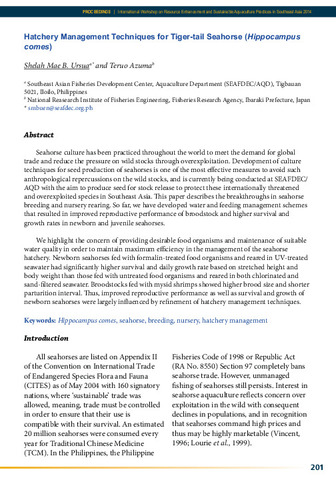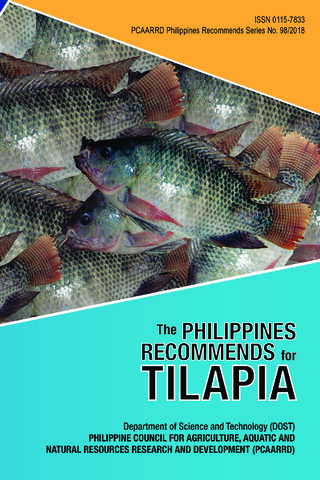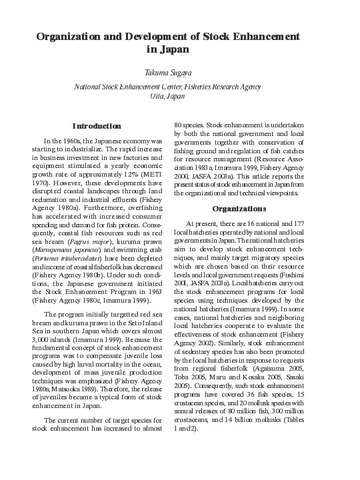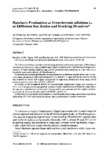Hatchery management techniques for tiger-tail seahorse (Hippocampus comes)
- Global styles
- MLA
- Vancouver
- Elsevier - Harvard
- APA
- Help

Date
2015Page views
6,491ASFA keyword
seed (aquaculture) 
growth rate
feeding
cultured organisms
nursery ponds
stocking (organisms)
trade
feeds
tropical fishes
survival
seed production
rare species
hatcheries
breeding
overexploitation
stocks
ornamental fishes
reproduction
breeding stock
species extinction
aquaculture techniques
fish culture

growth rate

feeding

cultured organisms

nursery ponds

stocking (organisms)

trade

feeds

tropical fishes

survival

seed production

rare species

hatcheries

breeding

overexploitation

stocks

ornamental fishes

reproduction

breeding stock

species extinction

aquaculture techniques

fish culture

AGROVOC keyword
Taxonomic term
Metadata
Show full item record
Share
Abstract
Seahorse culture has been practiced throughout the world to meet the demand for global trade and reduce the pressure on wild stocks through overexploitation. Development of culture techniques for seed production of seahorses is one of the most effective measures to avoid such anthropological repercussions on the wild stocks, and is currently being conducted at SEAFDEC/ AQD with the aim to produce seed for stock release to protect these internationally threatened and overexploited species in Southeast Asia. This paper describes the breakthroughs in seahorse breeding and nursery rearing. So far, we have developed water and feeding management schemes that resulted in improved reproductive performance of broodstock and higher survival and growth rates in newborn and juvenile seahorses.
We highlight the concern of providing desirable food organisms and maintenance of suitable water quality in order to maintain maximum efficiency in the management of the seahorse hatchery. Newborn seahorses fed with formalin-treated food organisms and reared in UV-treated seawater had significantly higher survival and daily growth rate based on stretched height and body weight than those fed with untreated food organisms and reared in both chlorinated and sand-filtered seawater. Broodstocks fed with mysid shrimps showed higher brood size and shorter parturition interval. Thus, improved reproductive performance as well as survival and growth of newborn seahorses were largely influenced by refinement of hatchery management techniques.
Suggested Citation
Ursua, S. M. B., & Azuma, T. (2015). Hatchery management techniques for tiger-tail seahorse (Hippocampus comes). In M. R. R. Romana-Eguia, F. D. Parado-Estepa, N. D. Salayo, & M. J. H. Lebata-Ramos (Eds.), Resource Enhancement and Sustainable Aquaculture Practices in Southeast Asia: Challenges in Responsible Production of Aquatic Species: Proceedings of the International Workshop on Resource Enhancement and Sustainable Aquaculture Practices in Southeast Asia 2014 (RESA) (pp. 201-206). Tigbauan, Iloilo, Philippines: Aquaculture Dept., Southeast Asian Fisheries Development Center.
Type
Conference paperISBN
9789719931041
Related items
Showing items related by title, author, creator and subject.
-
Series: Philippines Recommends Series; No. 98/2018
The Philippines recommends for tilapia
The Tilapia Technical Committee 2017 (DOST-PCAARRD, 2018)Tilapia is one of the most commercially important commodities in fisheries and aquaculture. Although tilapia is relatively easy to propagate and culture, the Philippine tilapia industry needs the necessary boost in the ... -
Organization and development of stock enhancement in Japan
Sugaya, Takuma (Aquaculture Department, Southeast Asian Fisheries Development Center, 2006)In the 1960s, the Japanese economy was starting to industrialize. The rapid increase in business investment in new factories and equipment stimulated a yearly economic growth rate of approximately 12% (METI 1970). However, ... -
Hatchery production of Oreochromis niloticus L. at different sex ratios and stocking densities
Bautista, Antonio Ma.; Carlos, Manuel H.; San Antonio, Antonio I. (Elsevier, 1988)The influence of various sex ratios and stocking densities on hatchery production of Nile tilapia, Oreochromis niloticus L., was studied in land-based (concrete tanks) and lake-based (hapa nets) systems. In both hatchery ...





